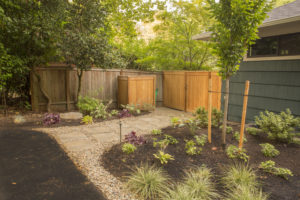Green Landscaping: 5 Tips for a Lush and Eco-Friendly Landscape
Is it possible to have a beautiful lawn, lush landscape, a pest-free garden and be environmentally friendly? Yes!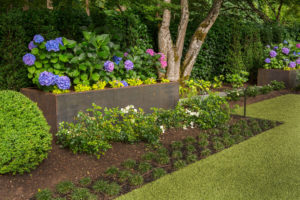 It’s not only possible, but it is relatively easy when you follow these simple “green landscaping” methods.
It’s not only possible, but it is relatively easy when you follow these simple “green landscaping” methods.
Green landscaping is just another term for sustainable or eco-friendly landscaping and involves creating landscapes and gardens that nurture nature; reduce air soil and water pollution, and help protect the surrounding ecosystem.
Here are our top five eco-friendly tips for a lush and “green” landscape.
- Go Native
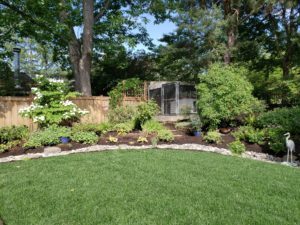 Native plants are naturally better suited to our Pacific Northwest climate and soil conditions and have natural defenses against native pests. Indigenous or locally adapted plant species are better equipped to survive and thrive without fertilizers, pesticides or other chemical additives, requiring less maintenance and less water. Native plants are also better suited to protecting the natural eco-system, and support native wildlife, birds and pollinators.
Native plants are naturally better suited to our Pacific Northwest climate and soil conditions and have natural defenses against native pests. Indigenous or locally adapted plant species are better equipped to survive and thrive without fertilizers, pesticides or other chemical additives, requiring less maintenance and less water. Native plants are also better suited to protecting the natural eco-system, and support native wildlife, birds and pollinators.
If you are uncertain how to achieve the landscape aesthetic you are after with native plants, our design teams offer years of experience and can help you with creative eco-friendly solutions.
Secondary to going native is to plant wisely. Get to know your yard and the different zones of sunlight and shade throughout the year, what type of soil you have and how well your soil tends to drain, then plant accordingly. Your landscape will thrive more readily with less care and water.
Consider planting perennials over annuals as they also typically require less water. Grasses are another water-smart choice and provide layering and visual interest to your landscape. Ground covers are another consideration as they can cover large areas, help reduce weeds, prevent erosion and stabilize sloping areas.
Avoid planting in the height of the dry or hot season when water use will be at its highest. Spring and fall are both excellent times to plant when there is no danger of frost, but the temperatures are still cool, and rainfall is plentiful.
- Use Mulch
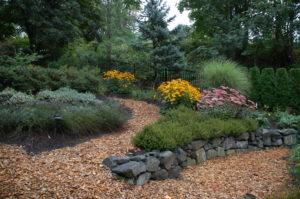 Mulch acts as a natural weed barrier, reduces moisture loss, reduces the spread of soil-borne pathogens and encourages the growth of beneficial microorganisms in the soil around your plants – all of which serve to enhance the health of your landscape, lower your maintenance and reduce the need for weed killers and pesticides. Healthy thriving plants are less susceptible to pests and disease. Mulch also minimizes soil erosion and moderates soil temperatures.
Mulch acts as a natural weed barrier, reduces moisture loss, reduces the spread of soil-borne pathogens and encourages the growth of beneficial microorganisms in the soil around your plants – all of which serve to enhance the health of your landscape, lower your maintenance and reduce the need for weed killers and pesticides. Healthy thriving plants are less susceptible to pests and disease. Mulch also minimizes soil erosion and moderates soil temperatures.
We recommend 2-3 inches of organic mulch spread evenly around and between plants. You should also add at least 2 inches of new mulch annually. This is a service we provide as part of our regular landscape maintenance care.
- Amend the Soil
Healthy plants, including trees, shrubs, flowers, and your lawn, all need well-nourished soil that drains properly. Native plants may be well suited to their local environment, but this does not mean the condition of the soil is always optimal. In fact, it rarely is without a little help.
For a thriving, healthy landscape, your soil needs to provide essential nutrients like nitrogen to help leaf and stem growth; phosphorus which is vital to root growth; and potassium to enhance overall plant health. Amending your soil with organic fertilizer and compost will improve both the condition and the texture of the soil to help your plants get the nutrients they need.
Not sure what your soil needs or how to go about amending your soil? That’s ok, we can help. Landscape East & West offers a variety of services and natural solutions to improve and maintain the health of your landscape. Soil testing and amending are just two of the services we offer.
- Be Water-Wise
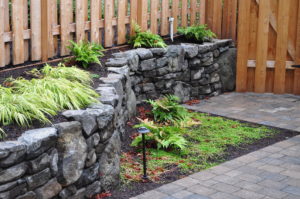 One of the easiest things you can do to create a more environmentally-friendly landscape is to utilize an efficient irrigation system that will minimize water waste. Install a sprinkler system with gauges that can assess moisture and adjust as needed. Inspect your system regularly to ensure you don’t have leaks, that plants have not overgrown sprinkler heads, and that you are not needlessly watering sidewalks, driveways or the street. Little adjustments can make a huge difference. Installing a drip system is another efficient means for delivering water directly to your plants without wasting water.
One of the easiest things you can do to create a more environmentally-friendly landscape is to utilize an efficient irrigation system that will minimize water waste. Install a sprinkler system with gauges that can assess moisture and adjust as needed. Inspect your system regularly to ensure you don’t have leaks, that plants have not overgrown sprinkler heads, and that you are not needlessly watering sidewalks, driveways or the street. Little adjustments can make a huge difference. Installing a drip system is another efficient means for delivering water directly to your plants without wasting water.
Residential irrigation is a specialty of ours and we would be happy to help you assess your water needs, design and install an optimal system for your yard, or simply inspect the irrigation system you may already have in place and make any necessary repairs.
- Utilize Hardscapes
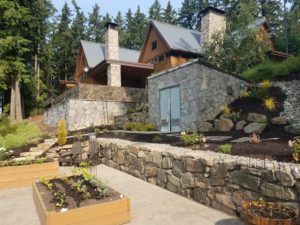 Hardscapes, like boulders, retaining walls, pavers, even gravel pathways, not only enhance your landscape with visual interest and functionality, but they offer eco-friendly solutions to landscape challenges and they don’t need watering, fertilizing or mowing. Hardscapes like walkways and patios also serve to reduce the size of your lawn, which in turn lowers your water use. Boulders and retaining walls help with soil erosion and stabilization of slopes and can create flat areas or terraces within a hillside or slope. Sustainable hardscaping materials like permeable pavers that allow water to seep into the ground; or salvaged, recycled materials can help lower your environmental impact and offer a more eco-friendly approach.
Hardscapes, like boulders, retaining walls, pavers, even gravel pathways, not only enhance your landscape with visual interest and functionality, but they offer eco-friendly solutions to landscape challenges and they don’t need watering, fertilizing or mowing. Hardscapes like walkways and patios also serve to reduce the size of your lawn, which in turn lowers your water use. Boulders and retaining walls help with soil erosion and stabilization of slopes and can create flat areas or terraces within a hillside or slope. Sustainable hardscaping materials like permeable pavers that allow water to seep into the ground; or salvaged, recycled materials can help lower your environmental impact and offer a more eco-friendly approach.
Spring is just around the corner, so now is the perfect time to assess your own yard and what you can do to create a lush and thriving, eco-friendly landscape.
At Landscape East & West we are passionate about beautiful yards, gardens, and landscapes and we are passionate about the environment. We also love providing natural and organic solutions and are here to help you with all of your landscape needs.

